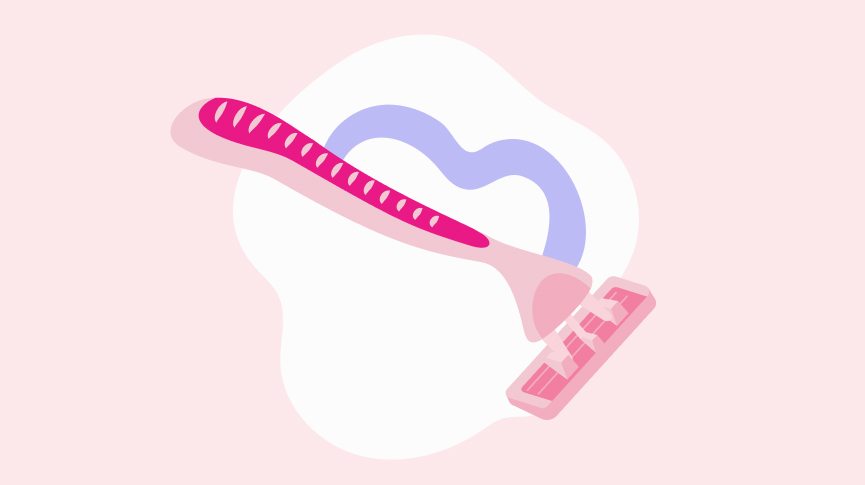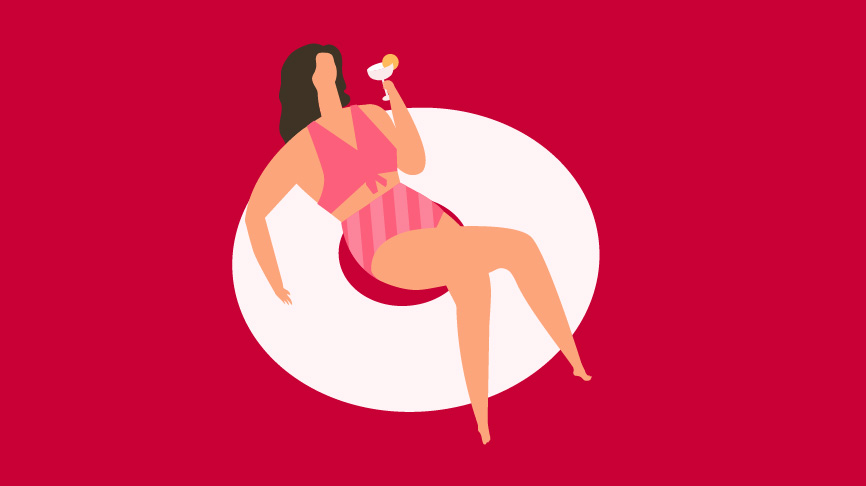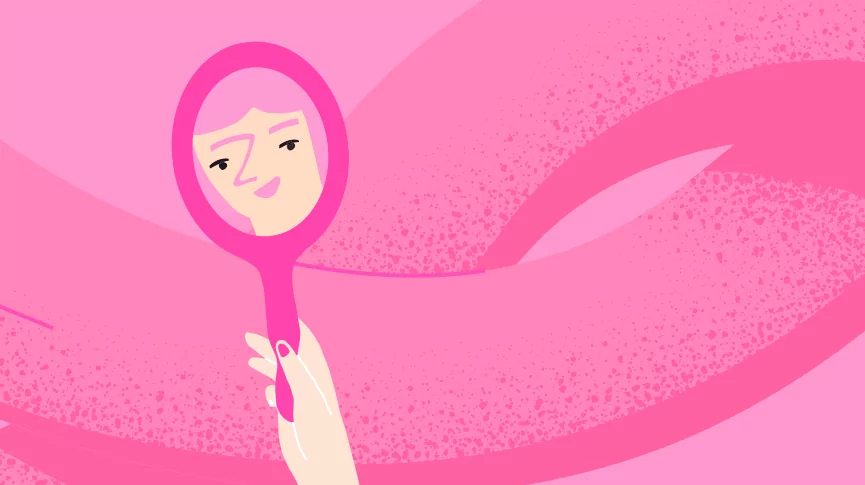Everything To Know About Hair Care Down There

Ah, pubic hair. While there’s a long and storied tradition of female pubic hair removal in various cultures around the world throughout history, it’s only in the last few decades that Western culture in particular has decided to wage war against the hair that naturally grows around the female genital region (remember the glorious bushes of nudey magazines and porn from the first half of the twentieth century into the ‘70s?).
Whether or not you decide to do anything at all to your pubic hair should be a personal choice based on your individual preferences and lifestyle. After all, pubic hair is 100% natural and, as we’ll discuss below, actually serves certain useful functions.
However, it’s also totally understandable to want to trim or remove pubic hair. Your body, your choice. If you choose to take care of the hair down there, here’s everything you should know about how to groom safely.
Why Do We Have Pubic Hair?
Having pubic hair is actually one of the ways that humans differ from other kinds of mammals (if you’ve ever paid close attention, you’ll notice that noble creatures such as dogs and dolphins, are devoid of this particular adornment). Pubic hair evolved in humans for a few reasons:
To protect us from pathogens like bacteria
Like eyelashes or nose hair, pubic hair helps trap debris, dirt, and other potentially harmful microorganisms. Moreover, hair follicles excrete sebum, an oil with antibacterial properties. This means that pubic hair serves as a protective barrier against infections such as vaginitis, cellulitis, STIs, urinary tract infections, and yeast infections.
To reduce friction
The skin around your genitals is very thin and delicate. Pubic hair buffers against friction that could cause injury during sex and other activities like wearing tight clothes. It can be thought of as a “dry lubricant,” since rubbing hair against hair produces less friction than skin against skin. Moreover, having warm genitals assists with sexual arousal, and pubic hair serves as a nice warm coat.
Other benefits of pubic hair include:
- Signaling a person’s sexual maturity
- Trapping and transmitting pheromones secreted by apocrine sweat glands, which are plentiful in the pubic area
What To Know About Pubic Hair Removal
If you decide to groom your pubic hair, here are some options and their pros and cons so you can choose the best course of action for you.
Shaving
Shaving is one of the most common ways of removing pubic hair, and it is also the most likely to irritate your skin. Shaving cuts hair very close to the skin and can result in rashes, infections, and ingrown hairs.
Razors can also carry bacteria so it’s important to use a new, clean razor or to wash your reusable razor thoroughly every time you shave. Try and shave in the direction that your hair grows, but it can be difficult to do so as pubic hair often grows in different directions.
Trimming
Trimming doesn’t cut as close to the skin as shaving, reducing the risk of infection or injury. You can do so with small scissors, trimming tools specifically marketed for pubic hair, or tools used for trimming beards (which are coarse and thick like pubic hair). If you have a weakened immune system, trimming is the way to avoid infection.
Waxing or sugaring
This method of hair removal pulls all the hair out at the root with a hot adhesive like wax or sugar paste. While the process can be painful, the results may last up to several weeks. There is a chance of general irritation and burns along with invisible cuts and skin damage, so if you have sensitive skin it may not be the best option.
If you decide to go with this method, make sure it’s done by a licensed, experienced professional. Make sure they follow hygiene practices such as using fresh tools and avoiding double-dipping with the applicator. You can take an OTC pain reliever to reduce pain, but don’t apply numbing cream because you want to be able to feel it if you get burned.
Depilatory creams
Depilatory creams are hair removal products that dissolve hair right at the skin line. Since they’re using chemicals to melt the hair, there’s a high risk of chemical burn and irritation to the genital area, and many medical professionals don’t recommend this method.
Laser hair removal
Laser hair removal kills hairs at the follicle, preventing it from growing back. This method requires multiple sessions with a licensed professional who customizes the kind of laser treatment depending on the color and type of your hair and skin.
Although results are mostly not permanent, hair doesn’t grow back as quickly or as thick after treatment, and over time laser hair removal reduces the overall amount of pubic hair. It is also the most expensive type of hair removal – according to the American Society of Plastic Surgeons, the average cost of laser hair removal is around $582.
Laser hair removal is normally safe when performed by a licensed professional, and there’s very little downtime, though there may be a little redness or swelling for a few days following each session.

Clara Wang is a freelance writer based in Nashville, TN but often found abroad. She mostly muses about the three best things in life: Food, sex, and music. Her work has been featured in publications such as Eater Austin, Eater Nashville, Giddy, Buzzfeed, Refinery29, the Austin Chronicle, the Austin American Statesman, and the Daily Dot.


